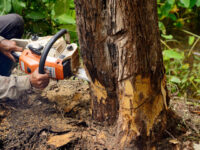Painting Contractors
Nashville Painting Contractors are trained to lead projects with efficiency. This is evident in their bidding process, material selection, project execution, and billing.
Ask a painting contractor for a detailed, transparent estimate before starting work. This will help you avoid unexpected expenses and budget effectively. They should also offer warranties and guarantees on their work.
Painting contractors use a variety of tools to prepare surfaces for paint and ensure the job is done correctly. They also have extensive product knowledge, helping them choose the best paint for each project. They can also offer long-term maintenance plans to keep buildings looking their best and help avoid larger, more expensive repainting projects down the line.
A quality painting contractor will have a strong reputation and a wealth of positive client feedback. When deciding which contractors to interview, ask for references and examples of previous work that they have completed. These will provide you with valuable insights into the contractor’s professionalism, work quality and adherence to timelines.
Before the job begins, a good painting contractor will survey the project site and determine how much preparation work is required. This includes sanding down blisters, getting rid of loose paint and caulking cracks to prevent further damage during the painting process. It also involves removing or covering items that can’t be moved, such as furniture, electronics and decorative pieces. This survey helps the foreman and crew plan accordingly, ensuring they can complete the job in a timely manner.
During the estimate process, the contractor should also clearly outline the scope of work and all associated costs. This will help you to budget appropriately and avoid any unexpected financial surprises. Reputable painting contractors will be transparent in their pricing, allowing you to make an informed decision that is in your best interest.
It is important for painting contractors to have a robust customer service mindset, as this is what keeps clients happy and loyal. They should be responsive to any inquiries and always strive to meet or exceed expectations. They should also set up business bank accounts and record all money that comes in and out, as this will help with tax compliance and simplify understanding of cash flow.
One of the most important things to look for in a painting contractor is their experience handling commercial and industrial properties. These facilities often have strict operational guidelines, so it’s essential that they hire a contractor who understands these requirements. For example, hospitals and cleanrooms require painters who follow protocols to minimize contamination risks and maintain air quality standards during the painting process.
Painting
Painters are trained and experienced in applying the right amount of paint to surfaces for maximum visual impact, long-term durability, and value. They understand that every project is different and will work with the customer to ensure the results meet or exceed expectations. They also have the experience and expertise to offer other services such as waterproofing, epoxy coatings, and anti-graffiti applications.
A professional painting contractor will provide detailed estimates for all the required work, including labor and materials. A transparent estimate will help you budget for the project effectively and avoid unwelcome financial surprises. During this phase, you should ask the contractor for references and examples of their previous work. Make sure the contractor maintains a physical address and office, as this is a sign of professionalism and stability.
Before any surface painting can take place, it is necessary to thoroughly clean the area. Depending on the condition of the area to be painted, this may involve a power washer or other cleaning methods that will remove any dirt and grime that has built up over time. This step is essential to ensuring that the new paint will adhere properly and last longer.
Once the surface is ready to be painted, the painting contractors will apply the selected color to the appropriate surfaces. In some cases, a second coat may be needed to achieve the desired result. When working with wood, it is important to consider that the grain of the wood will show through the paint and can affect the final look.
When working with a professional painting contractor, you can rest assured that the job will be completed in a timely manner and to your satisfaction. They will also typically provide a warranty or guarantee on their work, providing peace of mind that any issues that arise will be addressed promptly and professionally.
Painting is a complex process that requires both skill and patience to produce the best results. A quality painting contractor will always prioritize safety and will provide the proper equipment and tools for each task. Attempting to complete these tasks yourself can be dangerous, especially when using ladders or scaffolding. Moreover, inexperienced DIY painters may accidentally damage surfaces with their tools or cause accidental spills and staining.
Cleanup
Besides basic cleaning materials like microfiber cloths and TSP cleaner, a good vacuum with HEPA filtration helps to minimize dust build-up. For more thorough surface cleaning, a commercial degreaser may be needed to tackle greasy residue or stubborn oily spots on wood surfaces. Depending on the scope of work, painting contractors will also need sandpaper in different grits (typically 80-220), sanding blocks, and possibly power sanders for large areas or tough surfaces. For surface repair, spackling compound, wood filler, caulk, putty knives, and drywall tape are often used to address cracks, holes, or other imperfections. To keep dust to a minimum, painting contractors may use a quality dustless sanding system that keeps indoor air clean and free from contaminants.
Painting contractors will also need painter’s tape, drop cloths, and plastic sheeting to protect adjacent surfaces from preparation debris and eventual paint application. Quality brushes, rollers, and trays are a must for surface preparation and paint application. Additionally, a moisture meter can be a valuable tool to identify any hidden moisture that can compromise adhesion techniques.
Before moving on to the next phase, painting contractors will thoroughly rinse all cleaned surfaces to remove all cleaning chemicals and dripping water. If necessary, they may ventilate the workspace to speed up the drying process. They will also store all leftover paint and empty paint cans properly to avoid contamination of the environment. It is important to research local waste disposal guidelines before throwing away paint and empty cans. The EPA recommends separating and recycling these items whenever possible.
Final Inspection
The final inspection is a thorough walk-through of the project. It’s an opportunity to make sure that everything is in compliance with the project plans and codes and standards. It’s also a chance to fix any issues that have arisen, such as small dings from construction trades or minor paint touch-up. Performing the final inspection is essential to getting the project finished on time and with the quality expected.
Check for bumps, cracks, strange adhesions and other blemishes that don’t match the rest of the job. Typically, these are an indication that the painting contractor did not follow the proper procedure for the type of coating or surface being applied. It is also a good idea to look for areas where the old primer can be seen through the new coats of paint. This can indicate a lack of preparation, and it is not acceptable.
Another important point is that the painters should be able to create clean, straight lines on surfaces. Wavy lines are a sign of poor technique and should not be tolerated. The painters should also be able to clearly differentiate between two different colors. This is also a good time to check for the painters’ use of tape to create straight lines and ensure that they are following their own set of rules and procedures.
If the inspector finds that any of the work doesn’t meet specifications, he or she should note it in the inspection report. The inspector should then ask the contractor to rectify the problem. He or she should also note whether any additional materials were required to achieve the desired result, such as a primer or filler.
All of the painting material brought to the site should be accompanied by manufacturer’s test certificates and safety data sheets. The contractor should be able to supply the latest original issue of these documents on request.
The final inspection should include a measurement of the dry film thickness and an adhesion test. The inspector should also review the cleanliness of the surface, as well as the condition of the spray nozzle tip.






